Cover Image : mis disculpas a Vera Cruz (1)

A Mesoamerican retrospective delivered in memes (focussing on the Azteca por supuesto).

There is some controversy over the term “Aztec”. It has been posited that the word was “invented” by white anthropologists (and sometimes more specifically Friedrich Heinrich Alexander von Humboldt) (1) to describe the people of the Valley of México because, at this stage, Western anthropology had no idea what the people called themselves so they helpfully invented the term Aztec. This is of course bullshit.
- The first published use of the term “Aztec” was when Father Francisco Javier Clavijero Echegaray included it in his book La Historia Antigua de México (1780). A few decades later, German explorer Alexander Von Humboldt borrowed it when writing of his trip to Mexico. The term entered the English lexicon when William Prescott’s book The History of the Conquest of Mexico was published in 1843.

The most often espoused meaning is that the people (who I’m referring to as Aztec) were specifically the Mexica (later called the Culhua Mexica) people who were one third of the Aztec Triple Alliance, a group created by the alliance of three city states whose intent was to overthrow a cruel and despotic ruler who held sway over the Valley of Anahuac (a task in which they were incredibly successful by the way).
Older traditions state that the people were initially called Aztec. They were one of many peoples living in a fabled homeland. Their God demanded that they must leave their birthplace of Aztlan and instructed them to travel until they encountered a specific omen (more on this later) at which time they were to put down roots and settle in the new found land.

In a previous Post (1) I investigate this theory that there were no people known as the Aztec but that this word referred to an alliance of three tribes (for military purposes) that I mentioned earlier. There is another school of thought that speaks the opposite. The Aztec people, named after their birthplace Aztlán (2), already existed and that an omen from Huitzilopochtli (3), triggered by a hummingbird landing on a tree which then split, signalled that this tribe, the people of Huitzilopochtli, should separate themselves from a group of seven different tribes that coexisted together (4). These people were to let go of the name Aztec and call themselves the Mexicah. This version of the story then joins the commonly known narrative (5). The empire consequently created by the wandering Mexicah tribe was then called the Aztec empire because it contained many peoples from the other tribes that originally hailed from Aztlán.
- Origins of the words Aztec and Mexico
- There are several etymologies for the word Aztlan ranging from….. place of the heron… or more specifically an egret….a variant of Āztatlā, meaning “the place of snowy egrets” from the Nahuatl word for snowy egret, ātza (sic). This word derives from the forms ā- (meaning “water”) and -tza-, meaning “white.” (American Heritage Dictionary)- although another dictionary explains the root as being aztatl (rather than ātza) Principal English Translation: Snowy Egret, a bird.; Another source suggests that the word is named after the people themselves….“a place name; an island and legendary point of origin of the peoples who migrated and eventually settled Mexico City; home of the Azteca (people from Aztlan)”
- Their primary God, the Mesoamerican deity Huitzilopochtli was the patron god of the Mexica people and is the God of War (and the Sun) in the Aztec pantheon.
- These groups did (or are said to have) lived in a homeland referred to either as Aztlan or Chicomoztoc (which may or may not have been the same place). The groups (or tribes) migrated away from the area in a series of waves. The groups (and the order in which they departed) were the Xochimilcas, Chalcas, Tepanecas, Acolhuas, Tlahuicas, Tlaxcallans and finally the Mexica. The Mexica/Azteca were the last to leave Aztlan.
- The one where the wandering tribe settled where they found the eagle devouring the snake while perched upon the nopal. Huitzilopochtli, Tenochtitlan and the Opuntia Cactus
The Aztecs (now called Mexica) departed from Aztlan in the year 1 Flint. (Many scholars calculate this date as being 1168 A.D.) Their journey as depicted in the codex Boturini spans almost 200 years

Their journey ended 187 years later at Chapultepec in Anahuac in the Valley of Mexico in 1355 A.D.

Chapultepec at the time was less than ideal as a location.

(Roughly) translated
Here we will build the city
No mame, boss, it’s a fucking lake
Well, don’t be an idiot and want to overpopulate the place. I don’t think you’re so slimy (1) that, in your centralist desire, you build thirty-something-story buildings on what was a lake for thousands of years, no mames (2), fucking macehual (3)
- The word “baboso” is a Spanish word that literally translates to “slime/slimy” (refer to the “slime” of the nopal as baba), It is a slang term used to identify a person that slobbers too much. Because slobbering is usually the result of ones mouth hanging open for a prolonged period of time, the person is identified as an (drooling) idiot, or someone who stares too much in a leering manner (a pervert)..
- (roughly “for fucks sake boss, you gotta be kidding me) – ¡No mames! = “No Way!” This expression means “No Way!” but be careful when you say it or who you say it around because one explanation of it comes from the expression “to suck dick” – so literally, it means “don’t suck.” “No mames”, literally, “Don’t suck (dick)” Un mamón, (a (cock) sucker), is someone who, instead of going straight to the point, makes you lose your time with fellations (mamadas), figuratively. Another version describes it as meaning something like “insolent little douchebag”, “absurd fuckhead”, or “deliberately, and often arrogantly, uncooperative”. This is the more colourful and less polite version of ¡No manches! Even though it is technically rude, it is used extensively in conversation. “No Manches!”, which literally translates to “Don’t Stain!” (From no (“negation”) and manchar (“to stain”), is arguably the most popular slang phrase used in Mexico. The phrase derived from “No Mames!,” which translates to “Don’t Suck!,” and “No Manches!” evolved as a more mellow way of saying the same thing.
- (roughly) “you fucking peasant”
History and legend intermingle.
In the course of their peregrinations, Huitzilopochtli abandoned his sister Malinalxoch (1) (while she was sleeping) who had come along for the ride. Malinalxoch, was a sorceress. Huitzilopochtli thought she was evil, so he renounced her ways and abandoned her. “Sorcery is not my way,” Huitzilopochtli told his people. “My way is war.”
- Malinalxochitl, or Malīnalxōch, from Nahuatl malinalli “grass” and xochitl “flower” was a sorceress (or a type of a bruja known as a teyollohcuani) and goddess of snakes, scorpions, and insects of the desert. I’ve also seen it written as “black grass flower” and “flower of the grass”.
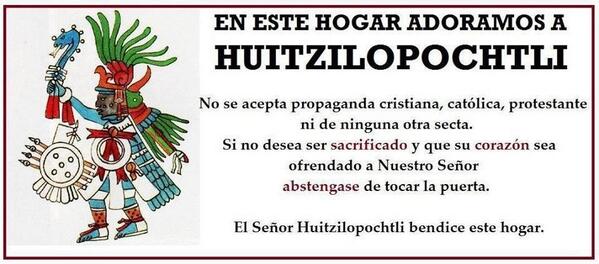
After abandoning Malīnalxōch the Aztecs trudged on until they came to Chapultepec. Along the way Huitzilopochtli appeared in a dream to his priests Tenochtli and Cuauhtlequetzqui and warned them to prepare for war (as was his way apparently).
At this very moment Malinalxoch, who had been whispering discontent into the ear of her son Copil, was reminding him of how she had been earlier abandoned by Huitzilopochtli. Copil had been taught magic by Malinalxoch and was an even greater sorcerer than his mother. Copil vowed to destroy Huitzilopochtli. He went to all the tribes that surrounded Chapultepec and incited them against the vagrant Azteca.
The nations of Azcapotzalco, Tlacopan, Coyohuacan, Xochimilco, Chalco and Colhuacan formed an alliance and prepared to attack.
Due to Huitzilopochtli’s prophetic warning things did not go Copils way however and he was captured by Tenochtli and Cuauhtlequetzqui who promptly cut out his heart and, at the instructions of Huitzilopochtli, threw Copils heart into the rocky swamp. It is said that from this discarded sorcerers heart sprang the first nopal plant (which would later play another part in the prophecy as it was upon this very nopal cactus that was seen the omen of the eagle eating the serpent which would indicate the location of their new homeland)

After this battle the Mexica moved on with their migration, but nowhere they wandered did the more established peoples of the Valley allow them to settle. The Mexica were a belligerent (1) and bellicose (2) group and were not readily accepted by the many peoples who already populated the area.
- Belligerent – hostile and aggressive.
- Bellicose – demonstrating aggression and willingness to fight.
When I think of a belligerent and bellicose peoples the first thing that comes to my mind (albeit a fictional people) are the……
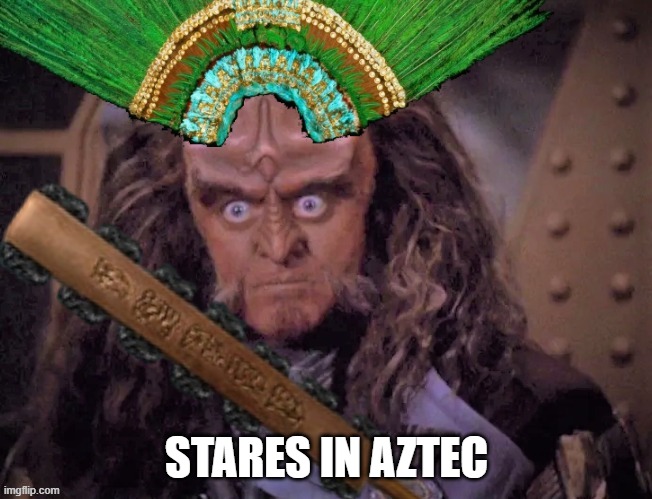
either to the Culhua Mexica people or the Klingon warrior Gowron, son of M’Rel.
After travelling through Coatepetl and Tula, and receiving a hostile reception from the tribes already settled there the Mexica ended up back on familiar ground in the area known as Chapultepec (the hill of grasshoppers)

After their return to Chapultepec, the Mexica soon faced another threat, this time from a coalition led by the Tepanecs of Atzcapotzalco who were supported by neighbouring Culhuacan. The Mexica were seen to be dangerous squatters and were decisively defeated by the Tepaneca and their Culhua allies who ousted these pugnacious Mexica from Chapultepec.
The main group of Mexica refugees made their way to Culhuacan to beg protection from its rulers. The ruler of Culhuacan, Cocoxtli, in a merciful mood, gave the Mexica permission to settle in the barren and inhospitable land of Tizaapan (1) in 1299 AD on condition that they acted as mercenaries for the Culhua in local inter-tribal disputes. They settled in and began an assimilation into the Culhuacan culture.
- Tiçapan, Tiçapaa- the same place. (Tizaapán, aguas blancas, white water). I have also seen it as meaning…Tizapán means “place of chalk” and comes from the Nahuatl word tizatl, which in turn means chalk or plaster. It is given this name because the area previously had deposits of hydrothermal origin of mineral white clay. Either way the place was known to be overrun with poisonous snakes and it was hoped the snakes would be the end of them (turns out snakes are delicious and the Aztecs were happy with this food source.)

Courtship and intermarriages between the Mexica and surrounding altepetl (roughly translates to city-state) soon began. The Mexica intermarried with Culhua nobility and began calling themselves the “Culhua-Mexica”, and by virtue of these newly established bonds of kinship, they began to regard themselves in some measures as part of the “Toltec” civilisation, for Culhuacan was a town where Toltecs had settled after the fall of Tula (1).
- According to tradition, Culhuacan was founded by the Toltecs under Mixcoatl and was the first Toltec city (Pohl 1991). Mixcoatl (Nahuatl- mixtli “cloud” and cōātl “serpent”), or Camaxtli, was the god of the hunt and identified with the Milky Way, the stars, and the heavens in several Mesoamerican cultures. He was the patron deity of the Otomi and the Chichimeca. Under the name of Camaxtli, Mixcoatl was worshipped as the central deity of Huejotzingo and Tlaxcala.

Mixcoatl was the father of 400 sons, collectively known as the Centzon Huitznahua, who ended up having their hearts eaten by Huitzilopochtli. The Centzon Huitznahua met their demise when they, and their sister Coyolxauhqui, after finding their mother Coatlicue pregnant, conspired to kill her. However, as they attacked she gave birth to a fully formed and armed Huitzilopochtli, who proceeded to kill his half-siblings



Tollan (“Place of the Reeds”), near the modern town of Tula (in the State of Hidalgo): in the 12th century, the invasion of the nomadic Chichimec destroyed the Toltec dominance of central Mexico. Among the invaders were the Aztecs, or Mexica, who participated in the destruction of Tollan about the mid-12th century.

At this stage however the Mexica were still minor players in the valley. Hirelings and mercenaries and with no legitimate power, Huitzilopochtli knew that his people would not find their deserved prominence as rulers until they took it, so he inspired them to ask the powerful new chief of Culhuacan for his daughter to be their goddess.

In the year 13 Reed (1323 AD) a Mexica delegation approached one of the Culhua lords, Achitometl, asking for his beautiful daughter (1) to become their “sovereign” by marrying and becoming the “wife of Huitzilopochtli”, the goddess Yaocihuatl (War Woman). Not understanding the implications of this request, Achitometl consented to the wedding which was believed to be a great honour; his daughter went to Tizaapan, where she was splendidly arrayed. Following custom the Mexica killed the princess, flayed her (removed her skin in one piece) and a priest donned her skin. In this way, she became their goddess, symbol of the fertile new growth that sprouts from the dried husk of the old. (2)
- Achitometl’s daughter “who was called Avençi” is named by just one source (Christensen 1883)
- See more on Xipe Totec (the flayed god) in my Post Xochipilli. The Prince of Flowers. Xochipilli (the Prince of Flowers) isn’t normally associated with flaying BUT there is suggestion that he might be wearing a face mask made from human skin (the “thigh skin facial paint”). Check out the Post (and a little bit here too.. Xochipilli. The Symbolism of Enrique Vela)


I discuss Xochipilli a fair bit in various Posts. He, like Xipe Totec, is a “deity” of agriculture (after a fashion). Xochipilli is considered to be a “lesser” deity amongst the pantheon of Gods that inhabit Mesoamerica although he fulfils several important roles such as being the young Sun and the power of the sprouting seed (Xochipilli : A Force of Nature). Typically associated with hallucinogenic plants (although this theory is becoming less valid considering recent understanding of the being : Xochipilli : Is it a Dahlia?). This deity is now the poster child for homosexuality and is being retasked by certain groups as being a “God” of homosexuals. This is an entirely inaccurate rendering of this particular being and does nothing but obfuscate his role within the pantheon.

Back to the festivities. We’re in the midst of a wedding celebration remember?
The Mexica then invited Achitometl to participate in the concluding festivities. Unsuspecting, he entered the temple in darkness and began to burn an offering of incense. In the light of the burner he saw the priest dressed in his daughter’s skin. Achitometl lost his freaking mind at seeing his skinned daughter and the outraged Culhua lord raised his army and Mexica were once again driven into the reeds and brackish swamps of Lake Texcoco.

Reaching for legitimacy.
The ruins of the city called Teotihuacan are located in the State of Mexico, 40 kilometres (25 miles) northeast of modern-day Mexico City : Teotihuacan was the largest city in the Americas, considered to be the first advanced civilization on the North American continent, with a population estimated at 125,000 or more. The Toltecs sacked and burned the great city of Teotihuacán about 900 AD.

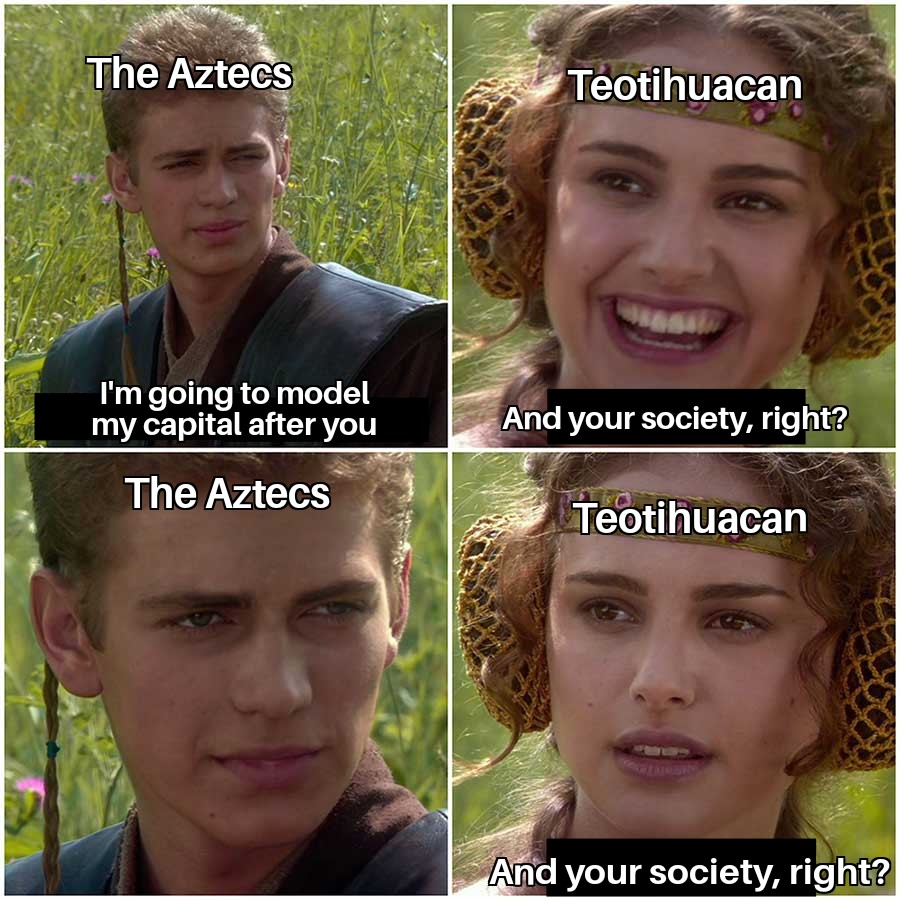

The Aztec strive for cultural dominance over the Valley
The Mexica continued to try their very best to link their culture with that of the Toltec (through history and intermarriage with nobility of Culhuacan who were descendants of the Toltec) so as to legitimise their own culture and their place in the lands of Anahuac.

During the reign of Itzcoatl, the 4th Huey Tlatoani of Tenochtitlan, (1427 to 1440) one of his actions to further solidify the Mexica-Toltec connection was to burn all the history books of his people and have them rewritten to include a Toltec heritage.

But, before Itzcoatl rose to power……
The aftermath of screwing with Achitometl
A little over 50 years after the flaying of Achitometls daughter (and another 50 years before the installation of Itzcoatl) the Mexica ended their wanderings. They had been forced to live on swampy islands strategically placed between the three of the most important peoples inhabiting the valley – the Culhua to the south, the Tepanecs to the west, and the Acolhua on the eastern side of the basin.
The same area they were now being forced to live was the same area that Copils heart had been disposed of and was where Huitzilopochtli’s prophesied omen of the eagle eating the snake whilst perched on a nopal (the very one that sprung from the ground where Copils heart had landed) would come to fruition. It was also where they began to build the city that would be called Tenochtitlan. The city from which they would soon dominate the Valley.

Following the death of their leader Tenoch in 1375 the council, or calpultin, decided to select a ruler with ties throughout the valley to cement the political power of the newly established Tenochtitlan. Acamapichtli was chosen to become the first Tlatoani of Tenochtitlan (This is an important moment. A tlatoani is a legitimate, elected ruler of a specific “city state” (altepetl). The Mexica sent a delegation to the Culhua, petitioning for the new elected Mexica leader Acamapichtli to be accepted as tlatoani (ruler) of their newly minted city (he would also become the first Mexica Huey Tlatoani). Conveniently, Acampichtli was a native of Texcoco and he was of mixed Mexica-Culhua descent with his mother being of Culhua royalty and his father a Mexica noble, and he also had connections with leading Acolhua families on the eastern side of the Valley of Mexico. What’s more, he brought with him a noble Culhua bride (some think it was actually his mother) named Ilancueitl.

This was the first time the Mexica had a legitimate political presence in the Valley. It was the beginning of their rise to ascension. The Mexica had managed to turn themselves into an independent entity at last by making friends with their on-again, off-again enemies, the people of Culhuacan.
By the time the Mexica had installed Acamapichtli the construction of Tenochtitlan was well underway.

Time to build an Empire.

Acamapichtli forged political alliances through strategic marriages (perhaps as many as twenty). He was regarded as a descendant of the god Quetzalcoatl and was called the “invincible warrior.”
Aztec aspirations escalate.
The Nahua Mexica of Tenochtitlan allied with the Acolhua of Texcoco and the Tepanecas of Tlacōpan to overthrow the current Tepanec ruler Maxtla (son of the despotic tlatoani Tezozomoc who was described as “the most cruel man who ever lived; proud, warlike and domineering”) and establish what would become known as the Aztec Empire. Tezozomoc died in 1426 AD and his son Maxtla ruled from then until his defeat at the hands of the Alliance in 1428 AD.
Itzcoatls book burning, as mentioned above, also resulted in the destruction of the existing historical books so as to erase the memory of Tezozomoc and the Tepanec Empire (Dalziel & MacKenzie 1996).

In 1428 AD (as time was counted in the Christian calendar) Nezahualcoyotl of Texcoco, Itzcoatl of Tenochtitlan and Totoquihuaztli of Tlacopan (this is the “Triple Alliance” that is regularly mentioned) took advantage of the death of the Tepanec ruler Tezozomoc. After the death of his father, Maxtla rose to power as tlatoani of the Tepaneca by murdering the rightful heir to the throne, his own brother.

The participation of Tlacōpan in the Triple alliance was a strategic necessity as they were Tepanecas and their participation legitimised the overthrow of the territory of Ātzcapozalco on the shores of Lake Texcoco which was the seat of Tepanec rule.

The former Tepanec lands were divided among the three leaders and the city of Azcapotzalco was destroyed and turned into a slave market. (1)


Aztec tributary states at the height of Mexica influence (read this as violent domination rather than “influence” maybe?)

That’s a lot of tribute

At this stage the “newcomers” to the valley are at the peak of their game and they have decided to Columbus the shit out of the place (and this long before Columbusing was even a thing).

They rapidly rose to power.

Then things fell apart.



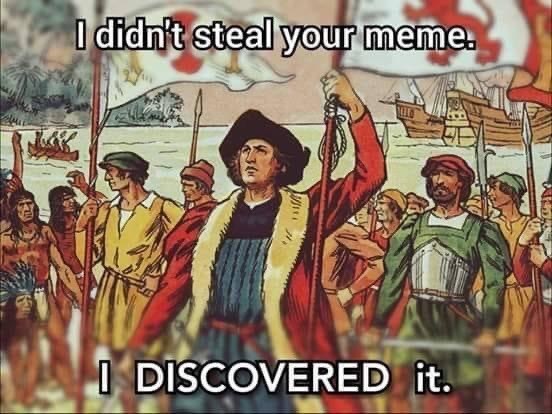
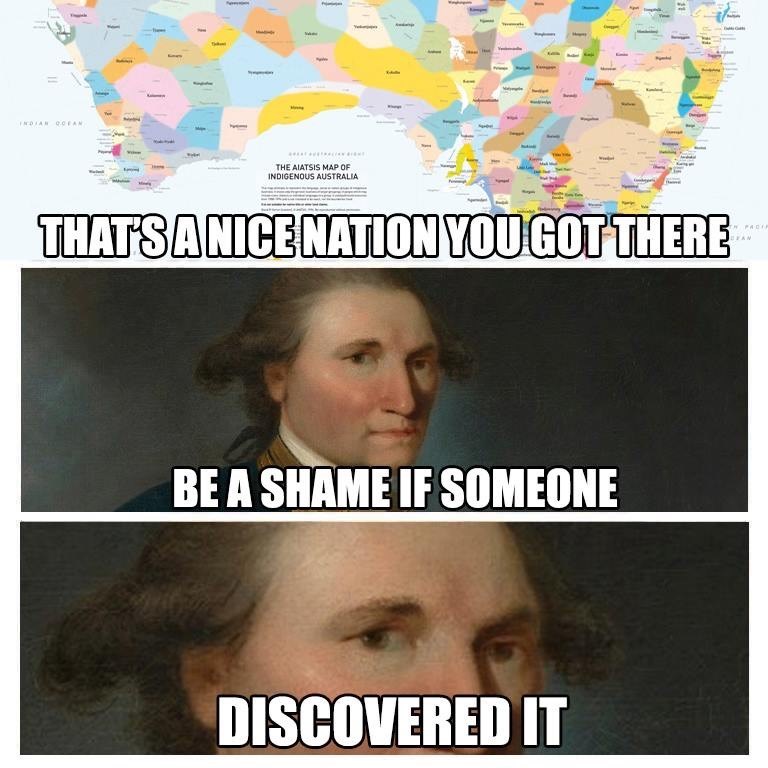
Columbusing – this word is said to have first been coined in 2013 (1) and was defined as “(1)”the act of taking over property which does not belong to you”. This referred directly to the “discovery” of the American continent in 1492 AD by the Italian explorer and navigator Christopher Columbus (2). In 2014 (June 23rd) the term had been taken up by CollegeHumor (3) and was presented in a skit “Colmbusing: Discovering Things for White People”.
- submitted by Urban Dictionary user Harunei on January 26th, 2013
- also “Cristoforo Colombo” or “Cristóbal Colón”. The name Christopher Columbus is the anglicisation of the Latin Christophorus Columbus.
- CH Media is an Internet comedy company based in Los Angeles which produces content for release on its streaming service, Dropout, and on YouTube. It was originally founded as the CollegeHumor website, created by Josh Abramson and Ricky Van Veen in 1999

After this the term was taken up by Left leaning media outlets and is now just delivered as a slur against white people with such ridiculous statements like “If you’ve danced to an Afrobeat-heavy pop song, dipped hummus, sipped coconut water, participated in a Desi-inspired color run or sported a henna tattoo, then you’ve Columbused something” (1) being spouted. Claiming something as yours and participating in something from a culture you were not born into are two completely different things.
- What a crock of shit. Insular and isolationist is what this statement is. https://www.npr.org/sections/codeswitch/2014/07/06/328466757/columbusing-the-art-of-discovering-something-that-is-not-new?utm_source=facebook.com&utm_medium=social&utm_campaign=npr&utm_term=nprnews&utm_content=20140706

According to Sweatpants and Coffee : “Christopher Columbus was not an awesome human being. And before anyone gets all, “but America!” about it: he never set foot on the North American continent. And, no, Columbus Day isn’t a long-standing tradition here. The Knights of Columbus fought for a Catholic, Italian-American holiday and convinced Congress and President Franklin Roosevelt to establish such a holiday in 1937. Even then, the first recorded celebration of Columbus Day wasn’t until 1972.”
Let’s also have a look at the word “discovery” as it does tend to come up quite a bit.

What does it mean to “discover” something? The Cambridge dictionary (1) puts it his way “the process of finding information, a place, or an object, especially for the first time, or the thing that is found”. Merriam Webster (2) puts it a little differently; “to find out about, recognize, or realize for the first time”; The Oxford (3) dictionary states something similar “an act or the process of finding somebody/something, or learning about something that was not known about before”. In this sense of the word Columbus did indeed “discover” the Americas (although they were not called this at the time) as these continents were previously unknown (4) to Europeans (or anyone else for that matter) (5).
- https://dictionary.cambridge.org
- https://www.merriam-webster.com/dictionary
- https://www.oxfordlearnersdictionaries.com
- or were they? See Did Columbus Cheat? The Piri Reis Map for one theory.
- or was it the fleets of Admiral Zheng He, whose travels from 1421 to 1423 A.D. under the Yongle Emperor during the Ming dynasty of China noted not only the Americas but also Australia, New Zealand, and Antarctica? or was it the Viking explorer Leif Erikson, son of Erik the Red, around the year 1000 A.D.?

The etymology (1) of the word is a little more illuminating and goes like this….
- Etymology – the study of the origin and history of words
- c. 1300, discoveren, “divulge, reveal, disclose, expose, lay open to view, betray (someone’s secrets),” senses now obsolete, from stem of Old French descovrir “uncover, unroof, unveil, reveal, betray,” from Medieval Latin discooperire, from Latin dis- “opposite of” (see dis-) + cooperire “to cover up, cover over, overwhelm, bury” (see cover (v.)).
- At first with a sense of betrayal or malicious exposure (discoverer originally meant “informant”). Also in Middle English used in literal senses, such as “to remove” (one’s hat, the roof from a building). The meaning “to obtain the first knowledge or sight of what was before not known,” the main modern sense, is by 1550s.
- Discover, Invent, agree in signifying to find out; but we discover what already exists, though to us unknown; we invent what did not before exist: as, to discover the applicability of steam to the purposes of locomotion, and to invent the machinery necessary to use steam for these ends. … Some things are of so mixed a character that either word may be applied to them. [Century Dictionary]
So to discover something is to “obtain sight of what was not before known” which fits perfectly with what Columbus did. What happened after, the rape and pillage of the Americas, is not discovery but something else entirely (and does fit with the etymological explanations of revealing, malicious exposure, betrayal and removal).

Now we get to Columbusing

The meme above is denigrating for several reasons but the one I’ll focus on is “authority”, as in “who has the authority to speak on a subject”? Genetics does not automatically give one authority over a subject. Training and knowledge of a subject is what imparts authority over that subject.
There has also been a great deal of both “popular and academic buzz” over the term Columbusing, particularly as it refers to food, and it is considered to be a part of the “cultural appropriation” argument (1). The chef Rick Bayless has been accused of both Colombusing and cultural appropriation when it comes to his success with cooking Mexican food and supplying it to American audiences/consumers. Rick does not claim to have invented any of his dishes and, if you watch his videos, he states where the food comes from (and even films it in the kitchens of the specific cook it originated from) and then “translates” it into something the American audience can understand. He has been accused of profiting massively from this theft (2). It has been noted (3) that “Whether Bayless’ interpretation of the cuisine is authentic is beside the point, and whether his cooking has actually furthered the appreciation for Mexican cuisine among the general populace, that is also irrelevant. The fact that he cooks it (is enough to condemn him) and it is further noted by the same author that Ricks cooking of Mexican cuisine “is akin to intellectual property theft, since it belongs like art, music and literature to the people who created it. This a compelling argument” (4). These same detractors mention nothing about Glen Bell and the travesty of Mexican food that is Taco Bell. Glen outright stole his ideas from a Mexican restaurant across the road (5) and the yearly income of Taco bell (6) which in 2022 was more than $2Billion dollars which I have no doubt outweighs any profit Rick makes in a year (I could not find exact figures on Ricks profits) although sales figures for three of Bayless’ restaurants (7) was as high as 30 million in 2013 (7)
- “Cultural” Appropriation of Cuisines?
- not many however take into account his scholarships for cooks, loans and support for small farmers, support for indigenous farmers and their heirloom corn (both growing, selling and importing/exporting it)
- https://www.wondriumdaily.com/food-columbusing/
- A “compelling argument”? Art, music and literature belong to the people ”who created it”? Cooking is an act of creation. Rick does not claim to be the creator of Mexican cuisine so this argument is not at all compelling. Envidia sounds like the cause of this authors problem.
- The Mitla Cafe in San Bernardino California which opened in 1937 and is still operating today
- Taco Bell has 8,218 locations in 31 countries : https://expandedramblings.com/index.php/taco-bell-facts-statistics/
- Frontera Grill (authentic regional Mexican cuisine); Topolobampo (Frontera’s upscale sister restaurant); Xoco (fast-casual street foods and snacks)
- https://www.restaurant-hospitality.com/new-restaurant-concepts/rh-25-frontera-restaurants – these are however just the sales figures and do not take into account staff wages or any of the other multiple costs in running a restaurant so actual profit will be much lower (and nowhere near the BILLIONS that Taco Bell draws in)

In the words of a famous Mexican chef, “All food is cultural appropriation” Enrique Olvera

BUT WAIT JUST ONE MINUTE……

Various depictions of Amerigo Vespucci
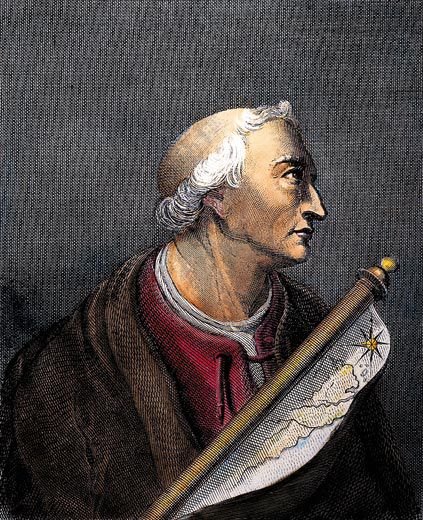

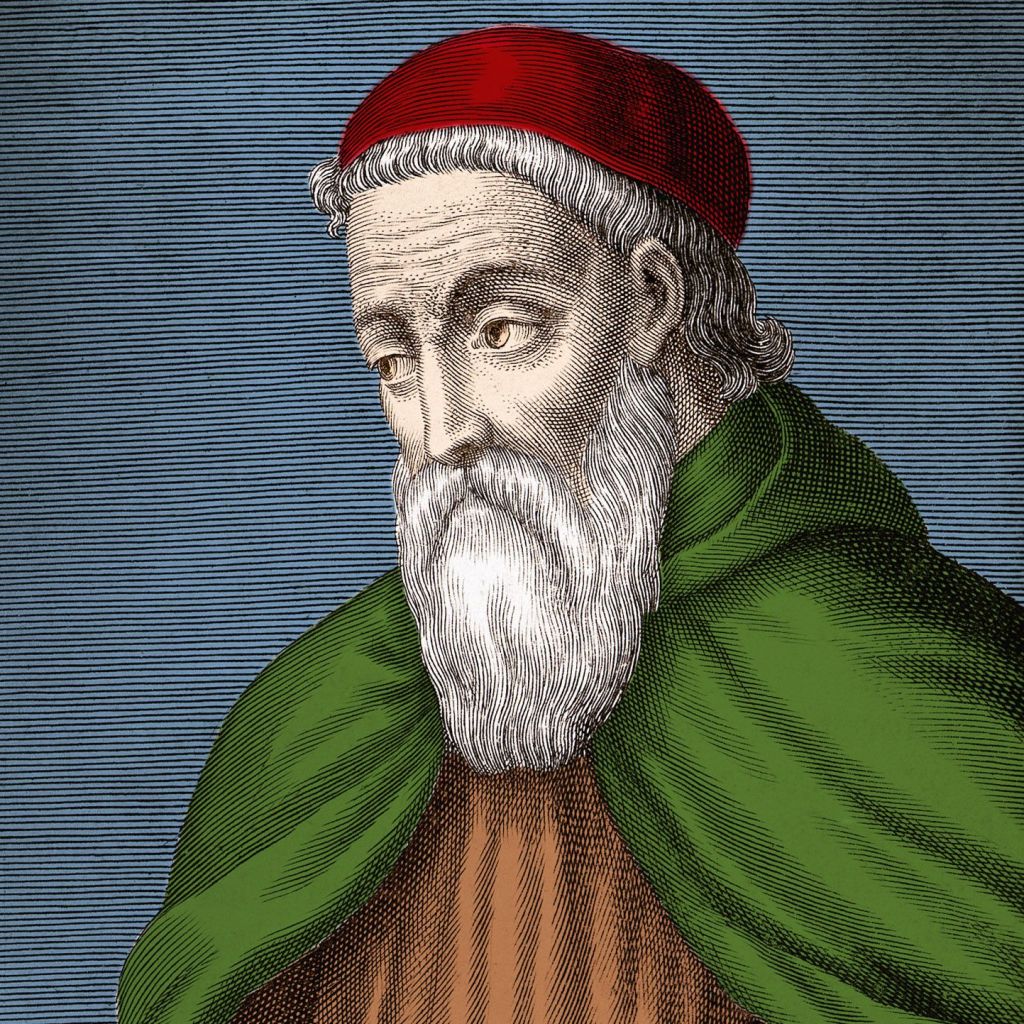
Amerigo was born on March 9, 1454, in Florence, Italy as the third child of a respected family.
Circa 1495, when Amerigo was in his 40’s he became the director of a company that supplied ships for long voyages. He is said to have knowledge of the provisioning and supply of Columbus’ voyage(s) and his own first voyage is reported to have taken place in 1497. Between 1497 and 1504, Vespucci participated in at least two voyages of the Age of Discovery, first on behalf of Spain (1499–1500) and then for Portugal (1501–1502). Vespucci was the first person to identify the New World as a new continent. During his 1501 voyage, he was the first person to propose the idea that America was a completely different continent to Asia.

(Drawing by Maria Zsigmond-Baca. By permission of Peter Gordon.)


Vespucci’s voyages became widely known in Europe after two accounts attributed to him were published between 1502 and 1504 and in 1507 a map created by the German cartographer and humanist (1) Martin Waldseemüller was the first to depict this new continent with the name “America,” a Latinized version of “Amerigo.” The map, “Quattuor Americi navigationes” (“Four Voyages of Amerigo”) was preceded by a pamphlet titled “Cosmographiae introductio,” and in it, Martin suggested that the newly discovered world be named “ab Americo Inventore…quasi Americi terram sive Americam” (“from Amerigo the discoverer…as if it were the land of Americus or America”).
- humanism refers to a non-theistic view (not having or involving a belief in a god or gods) centred on human agency, and a reliance on science and reason rather than revelation from a supernatural source to understand the world. Humanists tend to advocate for human rights, free speech, progressive policies, and democracy.
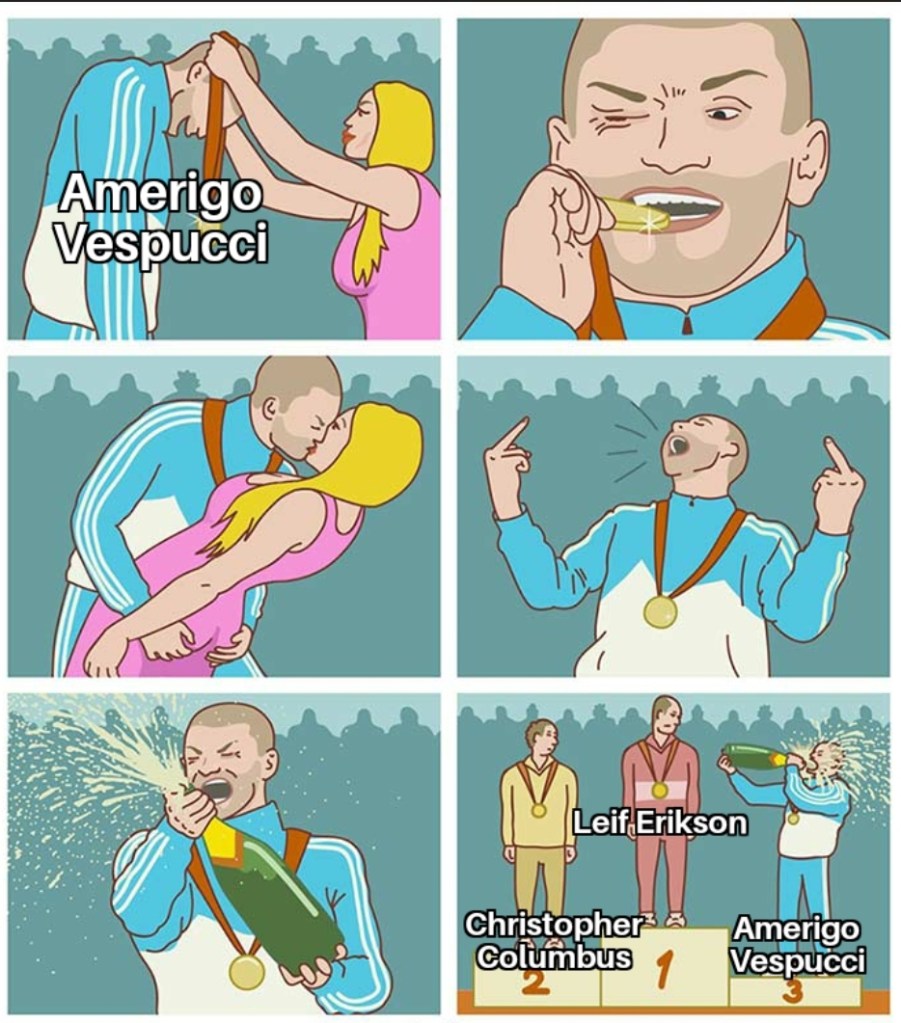
There is some controversy over Amerigos travels as “It is difficult to determine with certainty when Vespucci’s first voyage took place, since much of the information about him came from his own reports, with no additional supporting evidence. It is highly likely that he had made up some of his voyage tales in retrospect, pursuing the goal of self-glorification and striving to get the credit for being the first European to set foot on the land of the new continent”. (Halsall 1998)
Most of the information about Amerigos voyages comes from two letters he sent to his relatives upon his return. The first, written in 1501 to his patron Lorenzo de Medici, and the second and most controversial letter was supposedly sent to the governor of Florence, Piero Soderini in 1504, reviewing four alleged voyages, the first of which brought him to Central America in 1497. Halsall states that “Vespucci seemed to have fabricated this voyage, as there are lines of evidence pointing to him being in Seville that year, engaged in organizing equipment for Columbus’s third expedition” and that “Except for this letter there is no other evidence for him having embarked on such a voyage”.
It is said that Vespucci likely embarked on his first real voyage only in 1499, as part of a joint expedition with Alonso de Ojeda, under Spanish auspices, which brought him to Trinidad and Venezuela. However, his first truly significant voyage was the one that left on the 13th of May 1501, this time under the Portuguese flag.
Columbus or Vespucci. Does it really matter?


The barbarity of the Aztecs is often referred to as being one of the reasons the Spaniards were horrified by their culture

Barbarity however is simply a matter of perspective. Or is it?
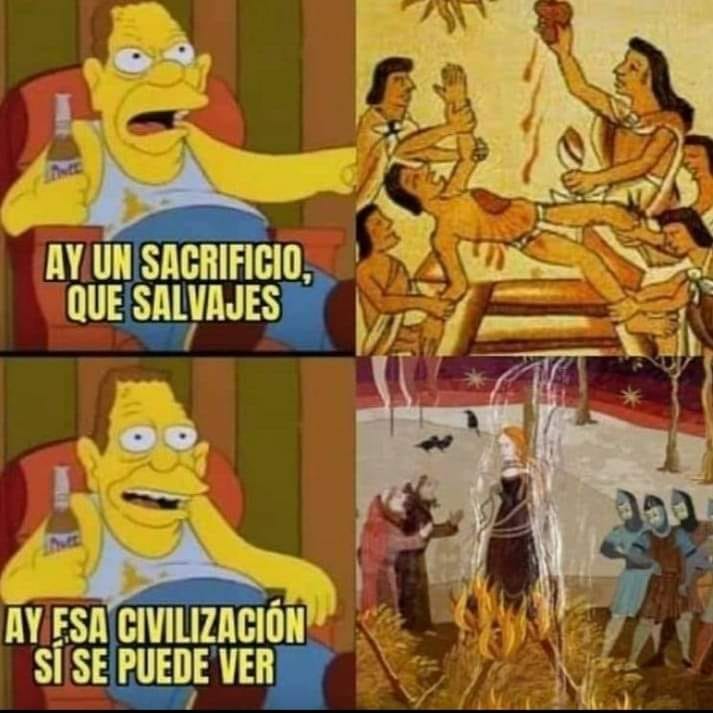




Proud to be Aztec
How can you deny 300 years of history? Mestizaje (1), culture, art, civilization…
So you are Arab?
Noooooo, it’s not the same
- The term mestizaje is a Spanish word that refers to the mixing between cultural and ethnic groups in Latin America, particularly Mexico, beginning with Spanish colonization. Because the process of colonization lasted centuries and its cultural impacts continued long after the period, mestizaje is a fluid concept. At first the term mestizaje focused on the cultural changes caused by colonization, yet, later in the 19th and 20th centuries, it also became associated with certain nationalist beliefs and attitudes in Mexico; once a descriptor, the term has evolved to address social and political identity movements as well.

In my opinion the Mesoamerican cultures were superior in every way to the Spanish (we can discuss human sacrifice at another time) and, if it were not for smallpox, they would have adapted to the warfare practices of the Spaniards and the World might have looked completely different to the one we now inhabit.
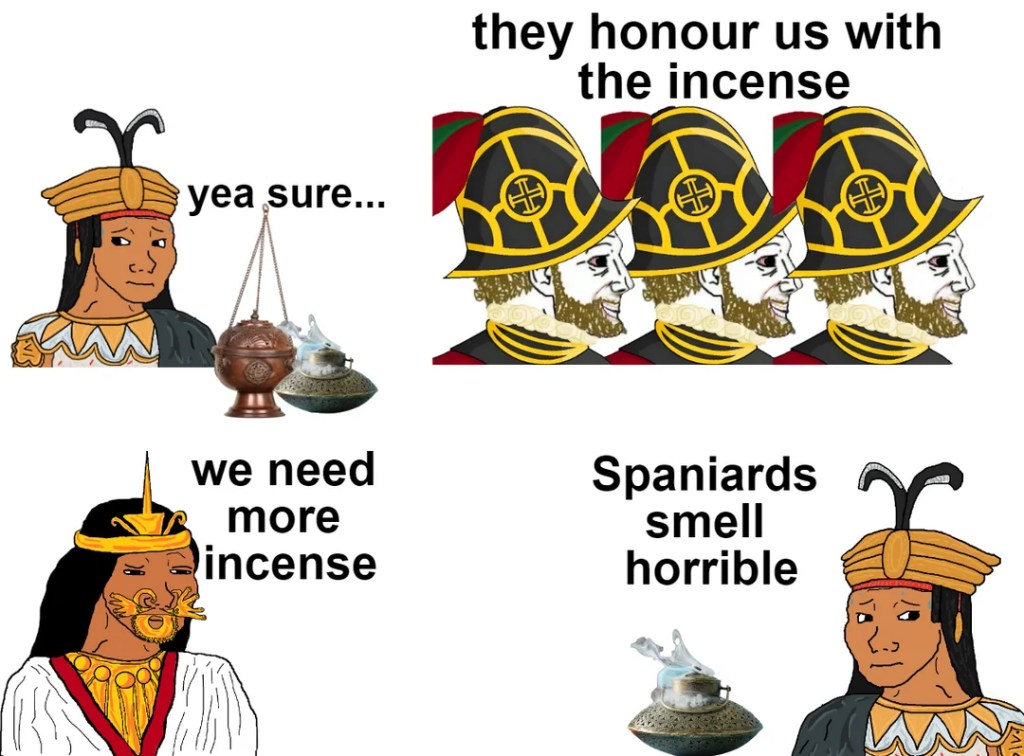

The “legend” of Cortés being seen as the white God Quetzalcoatl returning from the East can be dated to 1552 (Townsend 2003). She notes that Francisco López de Gómara was the first person to say that the Spaniards conquered Mexico because the conquistadors had been seen as gods by the indigenous people. She also points out that López de Gómara had never been to Mexico, but he was chaplain and secretary to the retired Hernando Cortés, who had led the conquistadors. Cortés own letters during the conquest make no mention of being mistaken for or interpreted as a god. Nonetheless, López de Gómara’s version quickly became the accepted story
JSTOR Daily put it thusly : Townsend argues that the “white gods” story is essentially political pornography, a dehumanizing narrative that equates technological with intellectual and moral superiority. Obviously, the “relatively powerful conquistadors and their cultural heirs should prefer to dwell on the Indians’ adulation for them rather than on their pain, rage, or attempted military defence.” Superior technology, including the diseases that came with it, should be front and centre in the history of the conquest. “The Mexicans themselves immediately became aware of the technology gap and responded to it with intelligence and savvy rather than wide-eyed talk of gods,” writes Townsend. “They knew before we did, it seems, that technology was the crux.”

I fall back on my comments re smallpox. Aztec society was superior in most aspects when compared to European society at the time. See my Post The Glory of the Aztec Empire which was part of a talk I presented at the West Australian Museum on exactly this subject.


The Spanish found a pool of allies only too ready to band with them to fight against the Azteca.
So they marched on to Tenochtitlan. Taking out Mexica allies along the way

Honestly, do we think the Mexica would have been surprised by this?
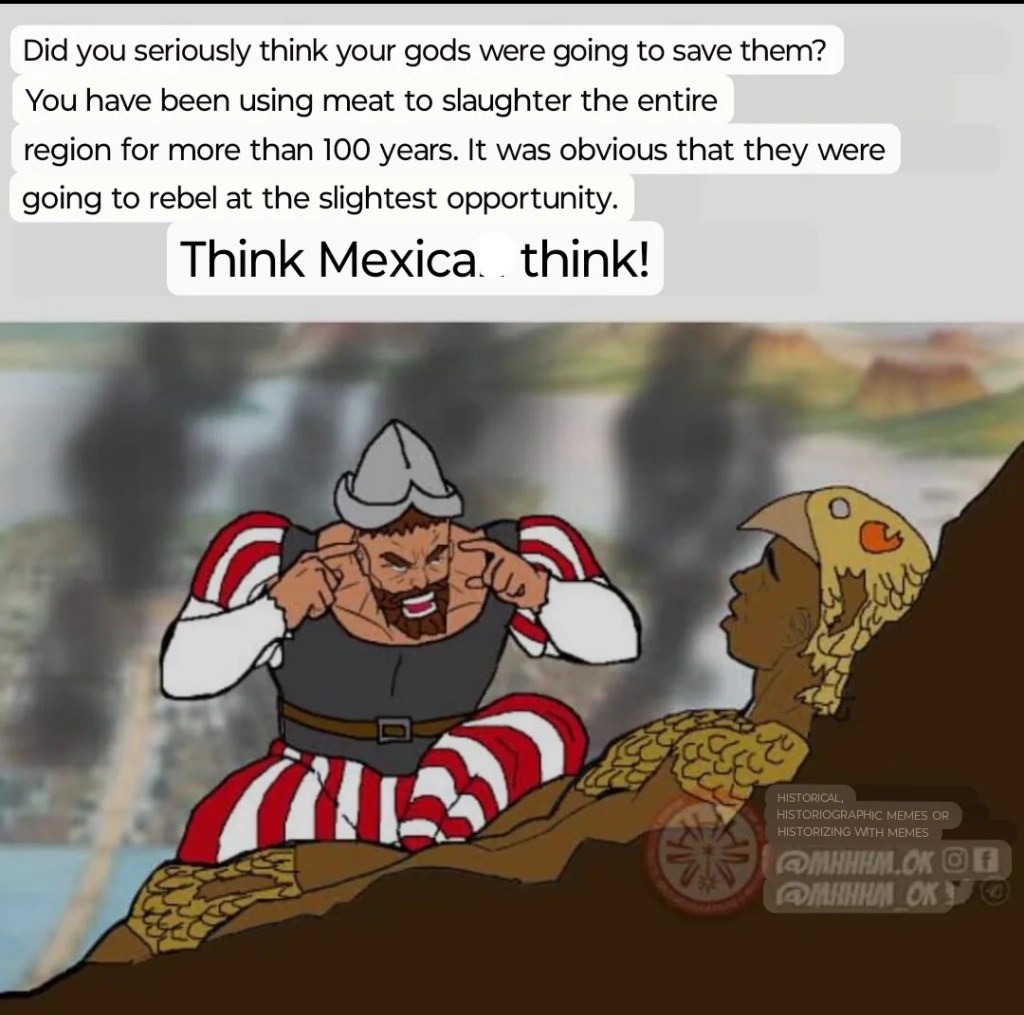
Tlaxcalla was not the only team to change sides and support the Spanish

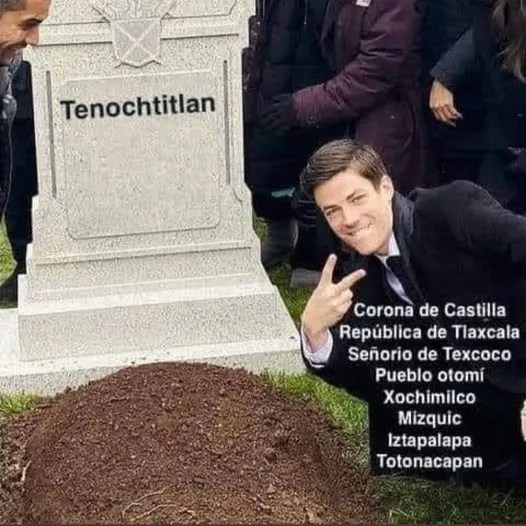
They might not have been completely surprised but surely it came as a bit of a shock at how enthusiastic about it they were
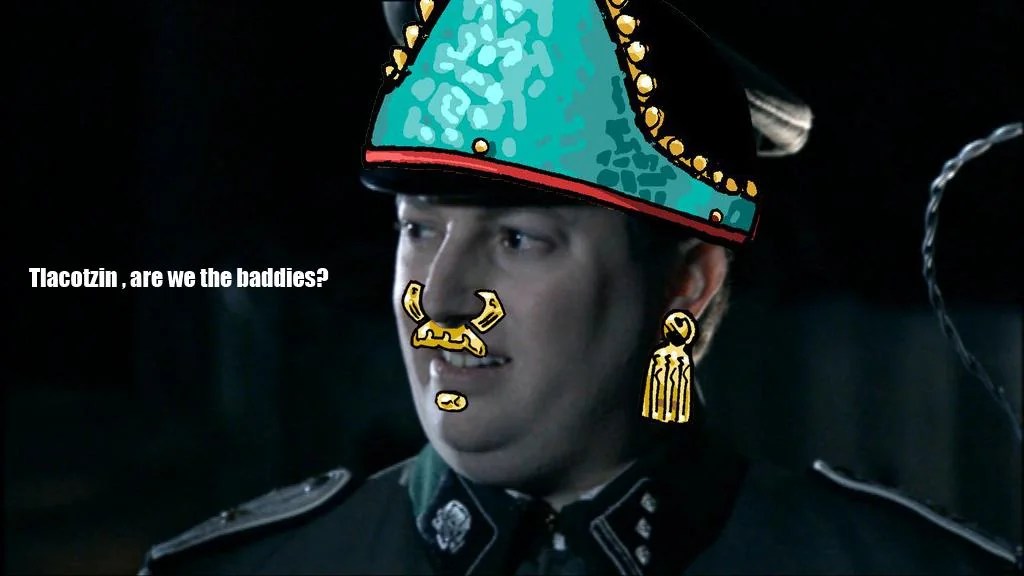
The cihuacoatl supervised the internal affairs of the land as opposed to the Aztec ruler, who oversaw the affairs of the Aztec state. The cihuacoatl also commanded the army of Tenochtitlan on behalf of the Tlatoani.
The success of Hernán Cortés in defeating the Mexica however was greatly boosted and primarily powered by his alliance with two great lords of Tlaxcala, Xicotencatl the Elder and Maxixcatzin. (1)

The Tlaxcallans fought alongside the Spanish for two years because Cortés had promised to help rid them of their mortal enemies the Aztecs. It is estimated that at least 250,000 Tlaxcallans were present at the siege of Tenochtitlan.


Eventually, the Tlaxcallans saw that the Spanish were a greater threat than the Mexica. Xicohténcatl Axayacatzin (Xicotencatl the Younger) had been wary of the Spanish from the beginning. He did not believe that the Spanish were gods but merely greedy mortals and led several unsuccessful ambush attempts on them before he was reined in by the ruling council. After it became apparent to all the threat the Spanish truly represented, he tried to openly break with them in 1521 and was ordered publicly hanged by Cortés.
February 28th, 1525AD, Cuauhtemoc, last emperor of the Aztec Empire, is killed by Conquistador Hernan Cortes.
Cuauhtemoc came to power unexpectedly during the final tumultuous months of the Aztec Empire. After Montezuma was (allegedly) killed by a mob of his own people the Spanish looted and fled the city in the ensuing “Night of Sorrows.”(La noche triste – called la noche victoriosa – the victorious night by the Azteca).

In the aftermath of this tragedy Montezuma was succeeded by his brother Cuitlahuac, who soon died of a smallpox epidemic that swept the city.

The young Cuauhtemoc was chosen to be emperor, leading a fierce resistance to Spanish occupation. Though he mounted a noble defense of Tenochtitlan he was without allies in the neighboring tribes, and recognized that he was fighting a lost cause. He resolved to abandon the city and escape with as many survivors as possible, dumping the wealth of the Aztecs into Lake Texcoco to prevent the Spanish from ever claiming it.

Cuauhtemoc was captured while escaping on the lake, and brought before Cortes. He demanded that Cortes execute him immediately, but the Spaniard refused, claiming that he respected his worthy opponent and would spare his life. Cuauhtemoc negotiated to allow the surviving Aztecs to peacefully leave the city before the Spanish entered. However, when Cortes discovered that all the gold and plunder which he had hoped to gain was missing, he had Cuauhtemoc and the other Aztec lords tied up and tortured by having the soles of their feet placed over burning coals until they revealed the location of the treasure.

Under duress, they admitted that the wealth of the Aztecs was lost forever at the bottom of Lake Texcoco. The Spanish would later drain the lake in an attempt to recover the lost gold. Cortes kept Cuauhtemoc alive and took him with him on his further campaigns, afraid that if he released him, he would inspire revolt amongst the native population. On an expedition to Honduras in 1525, Cortes was led to believe that Cuauhtemoc was plotting his murder, and so he and his fellow conspirators were hanged. Cortes later regretted the decision to kill Cuauhtemoc, suffering from insomnia over his guilt and lamenting that he had killed an honourable man and a worthy adversary. (Take your guilt and stick it up your arse Cortez)


Spain built its cities on the graves of Mesoamerica and from the very bones of the culture it tried so hard to destroy





There is one person who bears an unfair weight when it comes to the fall of the Mexica empire and that is La Malinche (also known as Malinalli/Malintzin).
The story (one of many) goes that she was (possibly of noble birth) a young girl who was sold or traded as a slave and a polyglot who spoke both Mayan and Nahuan languages.
On his march from the coast Cortés was aided by a previously shipwrecked sailor who had learned a Mayan language during his sojourn “in country” and who had been taken back into the fold by Cortés. He was acting as a translator for his new captain. At one point in this journey La Malinche had been gifted to Cortés (along with as many as 20 other women) and when the group first met a Mexica envoy that had been sent out (to potentially turn them back from entering the country any further) the group asked a question (possibly “who is in charge of this group”?) Cortés’ translator could not understand the language but, as the story goes, Malinche pointed at Cortés. He then used her as his new translator due to her skills and she quickly learned the Spanish language as well.

She became known for contributing to the Spanish conquest of the Aztec Empire by acting as an interpreter, advisor, and intermediary for Cortés who also took her as a consort, and she later gave birth to his first son, Martín – one of the first Mestizos.
Her input in the “destruction of Mexico” is entirely unfair as Mexico as we understand it did not exist (everyone largely despised the Mexica so they can get fucked as many would dearly have loved to see them get their comeuppance) but it has led to the creation of several slurs including the cultural phenomena of “Malinchismo” and the personal slur of “Malinchista”. La Malinche was just trying to survive and, as a slave, she had few options to do so. There is no doubt (in my mind anyway) that she had no idea how complete the destruction would be though.

Malinchismo may be defined broadly as the pursuit of the novel and foreign, coupled with rejection and betrayal of one’s own culture. This accusation was levelled at Porfirio Diaz (1) and his preference for European cultures over that of the Mexican.
- José de la Cruz Porfirio Díaz Mori (15 September 1830 – 2 July 1915), known as Porfirio Díaz, was a Mexican general, politician, and later dictator who served seven terms as President of Mexico, a total of 35 years, from 28 November 1876 to 6 December 1876, 17 February 1877 to 1 December 1880, and 1 December 1884 to 25 May 1911. The entire period from 1876 to 1911 is often referred to as the Porfiriato, and has been characterized as a de facto dictatorship.
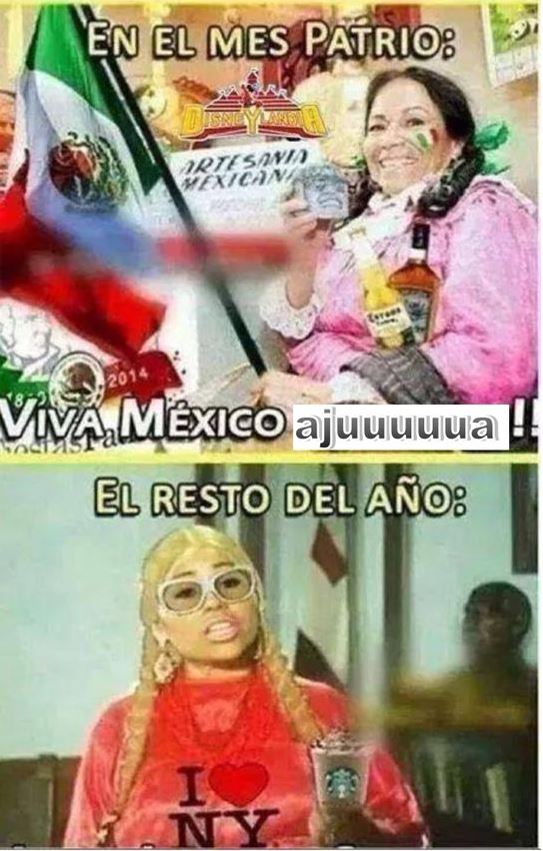
Malinchista is a term some Mexicans use to describe other Mexicans who show a preference for foreign things, speak gushingly of the order and tidiness to be found abroad, or are critical of Mexico and Mexican ways vis-à-vis their foreign counterparts. For some, malinchista is tantamount to traitor, although this is much too strong for its real connotation. To say “no seas malinchista” in reaction to some comment, purchase, or opinion, can be as inoffensive as heckling a friend over his or her choice of favourite sports team.

During the anniversary of 500 years since Spanish conquest the role of Tlaxcala in the fall of Tenochtitlan was revisited. They claim themselves as liberators whilst others say they are “insulted as traitors by their compatriots”. “The conquest is a singular event in Mexican history, seen both as a moment of national trauma and the founding act of the nation – and it remains deeply controversial” reports David Agren (1).

The current Mexican president, Andrés Manuel López Obrador called on the Spanish Crown and the Vatican to apologize for their roles in the “so-called conquest”. Spain declined (1); Pope Francis apologized while visiting Bolivia in 2015 (2).(and apparently the Spanish were pissed off (quite annoyed – pardon my slang) by the Popes apology)
- https://international.la-croix.com/news/religion/popes-apology-for-the-conquest-of-mexico-angers-spaniards/14973
- https://www.theguardian.com/world/2020/oct/11/mexico-asks-pope-francis-for-apology-for-churchs-role-in-spanish-conquest
Which of course generated its own meme war

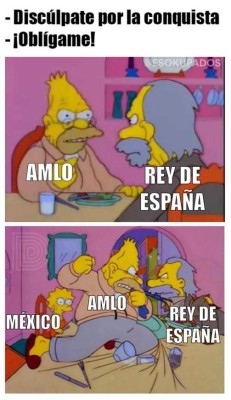
One of many memes shows the Aztec Gansopoxtli (ganso is a word associated with AMLO for his use of the phrase ‘Me canso ganso’ — ‘I’m tired, you goose’) with Cortés and the latter’s ally La Malinche, who says, ‘Gansopoxtli says you should apologize.’ (https://mexiconewsdaily.com/mexico-living/why-not-apologize/)
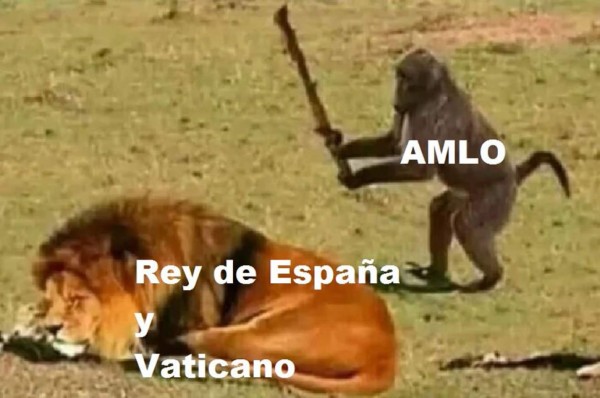
The Pope may have apologised but Spain was less accommodating……….

Not everyone is on the anti-Malinalli bandwagon though.

Malinche, estas acusada de “traicion a la patria” Que tienes que decir a tu favor?
Malinche, you are accused of “treason.” What do you have to say in your favour?
Oye Cuauhtemoc, no manches Traidora a que? mi lealtad no era con ustedes los mexicas, sino con el senorio maya.
Hey Cuauhtemoc, you suck! Traitor to what? My loyalty was not to you Mexica, but to the Mayan lordship.
Te recuerdo que en ese entonces no habia unidad politica ni cultural en el territorio, ni eramos patria ni nacion, ni siquiera pais
I remind you that at that time there was no political or cultural unity in the territory, we were neither a country nor a nation, not even a country.
Si pero este…tu ayudaste a que la cultura invasora de Quetzalcoatl se difundiera
Yes but…you helped the invasive culture of Quetzalcoatl spread (I’m assuming this references the myth that Cortés was the reincarnation of Quetzalcoatl returning)
Te recuerdo que despues que perdiste la guerra, ayudaste a Cortes a difundir la nueva cultura
I remind you that after you lost the war, you helped Cortes spread the new culture.
Asi que bajo tu logica : So under your logic
Tu eres traidor tambien! : You are a traitor too!
Malinchismo is still quite strongly a cultural phenomenon in Mexico. You just have to examine the treatment of the band Yahritza y Su Esencia when in an interview they were less than enthusiastic about the food (and noise) of Mexico. Mexico ABSOLUTELY DOES NOT like being disrespected by its own

I have written briefly on this in my Post Gentification of the Molinillo? I followed the progress of this downfall quite closely as it occurred (and have collected several hundred memes regarding it)


Mesoamerica and its impact on the World
The World pantry doubled when foods from the New World were exported to the Old.
Jitomate = Red (or yellow) tomato = (Nahuatl) Xitomatl. The word tomato is usually said to originate from (Nahuatl) tomatl, or “the swelling fruit”, from tomanna (often spelled tomana) (1), “to swell”. Various other translations (from xitomatl) are described as meaning “fat water thing” or “plump thing with a navel”
- I have not been able to find references to tomana or tomanna in any of my Nahuatl dictionaries. I am able to find “xictli” (navel), “tomāhuac” (fat) and “atl” water; hence “xi”+”toma”+”atl” = xitomatl
Tomate = tomate verde (green tomato) = miltomate (Nahuatl milli “milpa, planted” and tomatl “tomato”) = tomatillo = tomat/illo (little tomato = diminutive of Nahuatl tomatl)

Not all of Mexico’s exports were accepted and appreciated. In various parts of the world different plants dominated. Some of it was dictated by environment and some of it was dictated by the current botanical knowledge available at the time. For instance, the tomato was not readily taken up initially as it was known to be a relative of various toxic plants in the Nightshade family and so it was assumed that the fruits of the tomato plant were also poisonous. It took more than 300 years before the tomato was readily consumed by the public (Staller and Carasco 2009). The potato suffered from being similarly associated with nightshades and it too was considered poisonous but it was less than 100 years before this plant became accepted as a foodstuff (Reader 2008).


This was our other option.

Jitomate vs tomate verde

The Spanish replaced the Gods of the New World with their own.

Not that there was any real difference. The names might have changed but at the heart of things much remained the same.
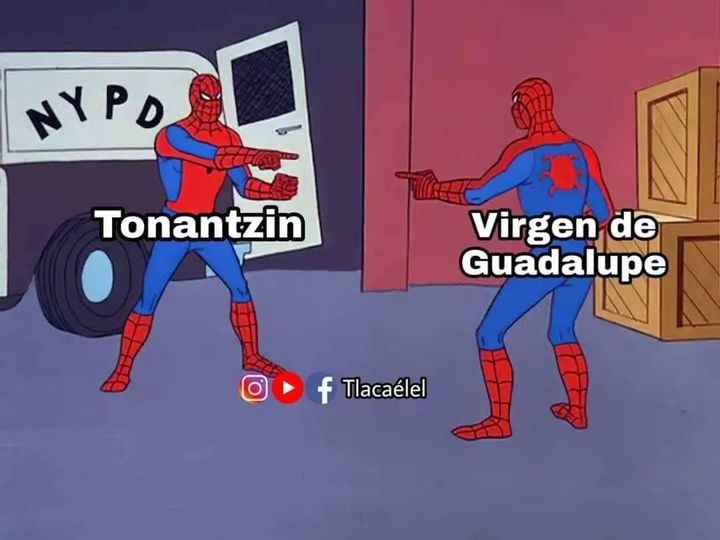
This hasn’t endured though. Even though the cities might remain (or appear to remain) strongly Catholic, the country folk are returning to old ways (if they even left them in the first place)

Mexicans are a practical people

If the culture fits, it is absorbed

They are also still a people with a warriors heart

Not everyone outside of Mexico’s borders gets it right though


Mexico itself is great at this. The Guajolota (a torta containing a tamale) is a great example of the culinary mestizaje estilo Mejicano. Having said that, the CDMX (1) is a beast unto itself and the rest of México has its own opinions re Edomex (2) and its crown jewel the CDMX.
- CDMX = Ciudad de Mexico = Mexico City. The CDMX was previously known as El D.F. (the Distrito Federal) as it previously held no statehood as such and was merely a “federal district” for politcal reasons. On 29 January 2016, it ceased to be the Federal District and is now officially known as Ciudad de México (or CDMX), which gives it a greater degree of autonomy (politically speaking).
- Edomex = Estado de México = the State of México





A note on reference texts used
Codex Boturini, also known as the Tira de la Peregrinación de los Mexica (Tale of the Mexica Migration), is an Aztec codex, which depicts the migration of the Azteca, later Mexica, people from Aztlán. Its date of manufacture is unknown, but likely to have occurred before or just after the Conquest of the Aztec Empire.
The Codex Magliabechiano is an illustrated cultural encyclopedia of indigenous culture created in Mexico probably at some time between 1529 and 1553 for a European audience. One of its artists was especially well versed in traditional Mesoamerican painting techniques, providing a link to the preconquest visual art tradition. The manuscript boasts 107 pages of pictures interspersed with Spanish-language texts. Among the topics addressed in text and image are religious rites, deities, native dress, and cosmological beliefs. The Codex Magliabechiano is especially valued as the most faithful surviving witness to an earlier illustrated manuscript of similar content that also informed the creation of the Codex Tudela and the Codex Ixlilxochitl, as well as other manuscript and print studies of Mesoamerican culture—known as the Magliabechiano Group.
The Historia Tolteca-Chichimeca is a 16th-century (sometime between 1547 and 1560) Nahuatl-language manuscript, dealing with the history of Cuauhtinchan. It is currently located in the Bibliothèque nationale in Paris.
The Badianus Manuscript : (Codex Barberini, Latin 241) Vatican Library; an Aztec Herbal of 1552 by Martín de la Cruz and Juan Badiano. The Libellus de Medicinalibus Indorum Herbis is an Aztec herbal manuscript, describing the medicinal properties of various plants used by the Aztecs. It is the earliest known treatise on Mexican medicinal plants and native remedies.
Codex Mendoza. The Codex was created by indigenous painters in the mid-16th century, probably at the behest of the first Viceroy of New Spain, Antonio de Mendoza. It recalls and documents imperial tribute lists, royal history, and practices of daily life among the pre-Hispanic Aztec.
Fr. Bernardino de Sahagún, Florentine Codex: General History of the Things of New Spain
Written between 1540 and 1585, the Florentine Codex (so named because the manuscript has been part of the Laurentian Library’s collections since at least 1791) The Florentine Codex is divided by subject area into twelve books and includes over 2,000 illustrations drawn by Nahua artists in the sixteenth century.
- Book I: The Gods
- Book II: The Ceremonies
- Book III: The Origin of the Gods
- Book IV: The Soothsayers
- Book V: The Omens
- Book VI: Rhetoric and Moral Philosophy
- Book VII: The Sun, Moon, and Stars, and the Binding of the Years
- Book VIII: Kings and Lords
- Book IX: The Merchants
- Book X: The People
- Book XI: Earthly Things
- Book XII: The Conquest
Codex Chimalpahin: Society and Politics in Mexico Tenochtitlan, Tlatelolco, Culhuacan, and Other Nahuatl Altepetl in Central Mexico; The Nahuatl and Spanish Annals and Accounts Collected and Recorded by don Domingo de San Antón Muñón Chimalpahin Quauhtlehuanitzin, eds. and transl. Arthur J. O. Anderson and Susan Schroeder (Norman: University of Oklahoma Press, 1997). This Codex is the most comprehensive history of native Mexico by a known Indian. It covers the years 1589 through 1615, but also deals with events before the conquest and supplies lists of indigenous kings and lords and Spanish viceroys, archbishops of Mexico and inquisitors. Chimalpahin recorded the 1610 and 1614 visits of Japanese delegations to Mexico, led by Tanaka Shōsuke and Hasekura Tsunenaga, respectively. He recorded of a fight where a Japanese samurai stabbed a Spanish soldier in Acapulco in the year 1614

It appears this battle is still going……


The memes……….

……….they go on forever…….

References
- Almagià, Roberto. “Amerigo Vespucci”. Encyclopedia Britannica, 17 Nov. 2023, https://www.britannica.com/biography/Amerigo-Vespucci. Accessed 27 November 2023.
- Christensen, Alex, ed., ‘History of the Mexicans as told by their paintings’, ed. and trans. Phillips, Henry Jr, Proceedings of the American Philosophical Society, 21 (1883), p. 631Google Scholar, http://www.famsi.org/research/christensen/pinturas/index.html
- Clendinnen, I. (1991). “Fierce and Unnatural Cruelty”: Cortés and the Conquest of Mexico. Representations, 33, 65–100. https://doi.org/10.2307/2928758
- Dalziel, Nigel; MacKenzie, John M (2016). The Encyclopedia of Empire || Tepanec Empire. , (), 1-2. doi:10.1002/9781118455074.wbeoe019
- Halsall, Paul (July 1998) Amerigo Vespucci (1452-1512): Account of His First Voyage, 1497 : Translation from Vespucci’s Italian, published at Florence in 1505-6, by “M. K.”, for Quaritch’s edition, London, 1885. : https://sourcebooks.fordham.edu/mod/1497vespucci-america.asp
- PENNOCK, C. (2018). WOMEN OF DISCORD: FEMALE POWER IN AZTEC THOUGHT. The Historical Journal, 61(2), 275-299. doi:10.1017/S0018246X17000474
- Pohl, John M. D. 1991. Aztec, Mixtec and Zapotec Armies. Osprey.
- Reader, John. (2008) Propitious Esculent: The Potato in World History
- Staller, John; Carrasco, Michael (2009). Pre-Columbian Foodways: Interdisciplinary Approaches to Food, Culture, and Markets in Ancient Mesoamerica. Springer Science & Business Media. p. 44. ISBN 9781441904713.
- Townsend, Camilla (2003). Burying the White Gods: New Perspectives on the Conquest of Mexico. The American Historical Review, 108(3), 659–687. doi:10.1086/529592
- Wood, Stephanie. ed. https://nahuatl.wired-humanities.org/content/malinalxochitl : Online Nahuatl Dictionary (Eugene, Ore.: Wired Humanities Projects, College of Education, University of Oregon, ©2000–present).
Websites
- Columbus Day : https://sweatpantsandcoffee.com/sweatpants-equality-real-history-columbus/
- https://ahdictionary.com/word/search.html?q=AZTL%C3%81N#:~:text=Although%20the%20meaning%20of%20Az,word%20for%20snowy%20egret%2C%20%C4%81tza.
- https://dle.rae.es/miltomate
- https://nahuatl.wired-humanities.org/content/atl
- https://nahuatl.wired-humanities.org/content/aztatl
- https://nahuatl.wired-humanities.org/content/aztlan
- https://nahuatl.wired-humanities.org/content/miltomatl
- https://nahuatl.wired-humanities.org/content/tomahuac#:~:text=tom%C4%81huac%20%3D%20fat,(central%20Mexico%2C%20sixteenth%20century)
- https://nahuatl.wired-humanities.org/content/tomatl
- https://nahuatl.wired-humanities.org/content/xitomatl
- JSTOR Daily : Burying the White Gods: New Perspectives on the Conquest of Mexico (Camilla Townsend) : The American Historical Review, Vol. 108, No. 3 (June 2003), pp. 659-687 : Oxford University Press on behalf of the American Historical Association : https://daily.jstor.org/the-mexica-didnt-believe-the-conquistadors-were-gods/
- Malinchista : https://www.mexperience.com/woe-is-the-malinchista/
- “Miltomate.” Vocabulary.com Dictionary, Vocabulary.com, https://www.vocabulary.com/dictionary/miltomate. Accessed 05 Dec. 2023.
- No mames – https://strommeninc.com/most-common-mexican-slang-no-mames-and-more/ JANUARY 24, 2023
- No manches – https://www.bientruchagroup.com/no-manches
- Tizapan – https://mundoitam.com/2018/01/23/colonia-progreso-tizapan-libro/

